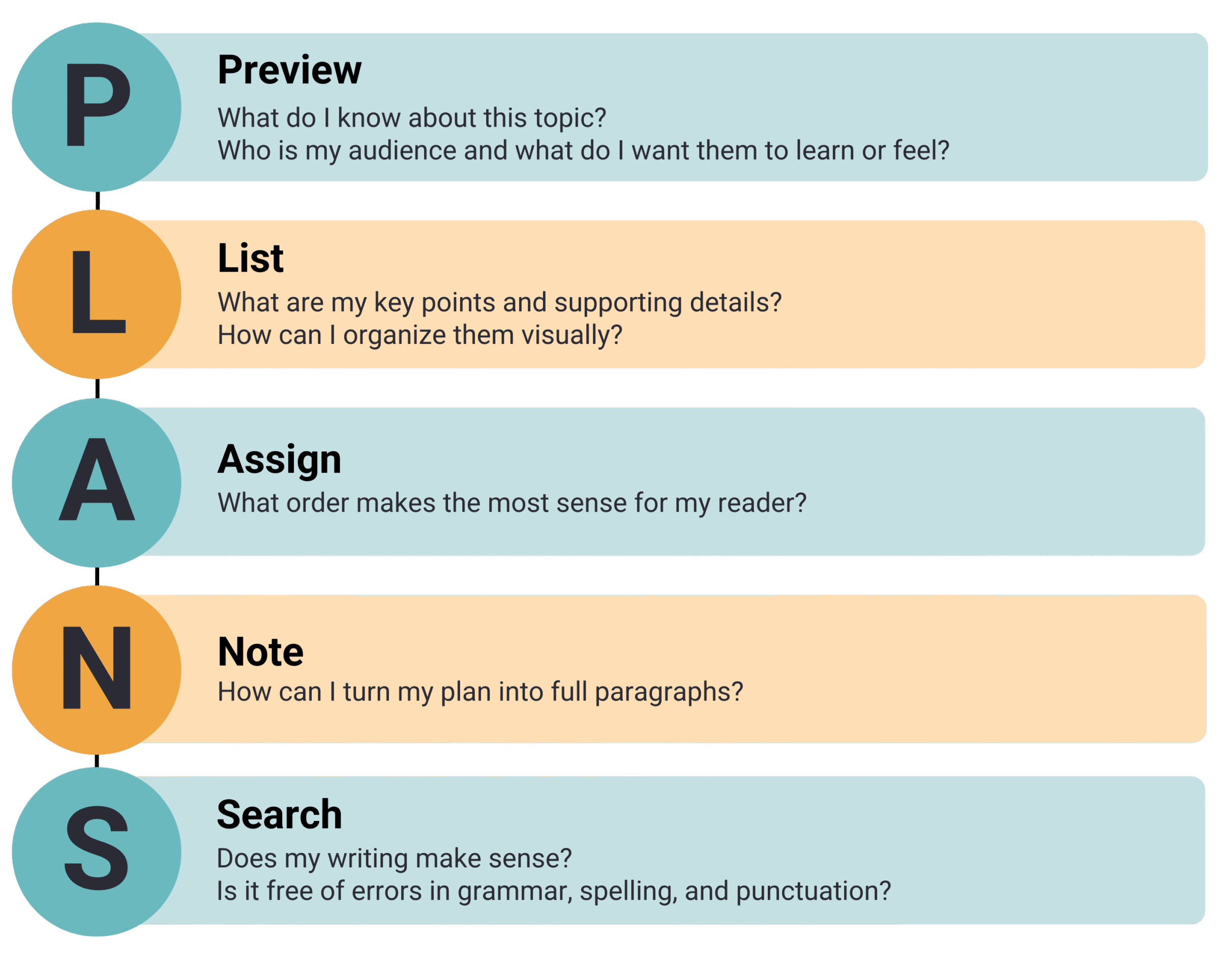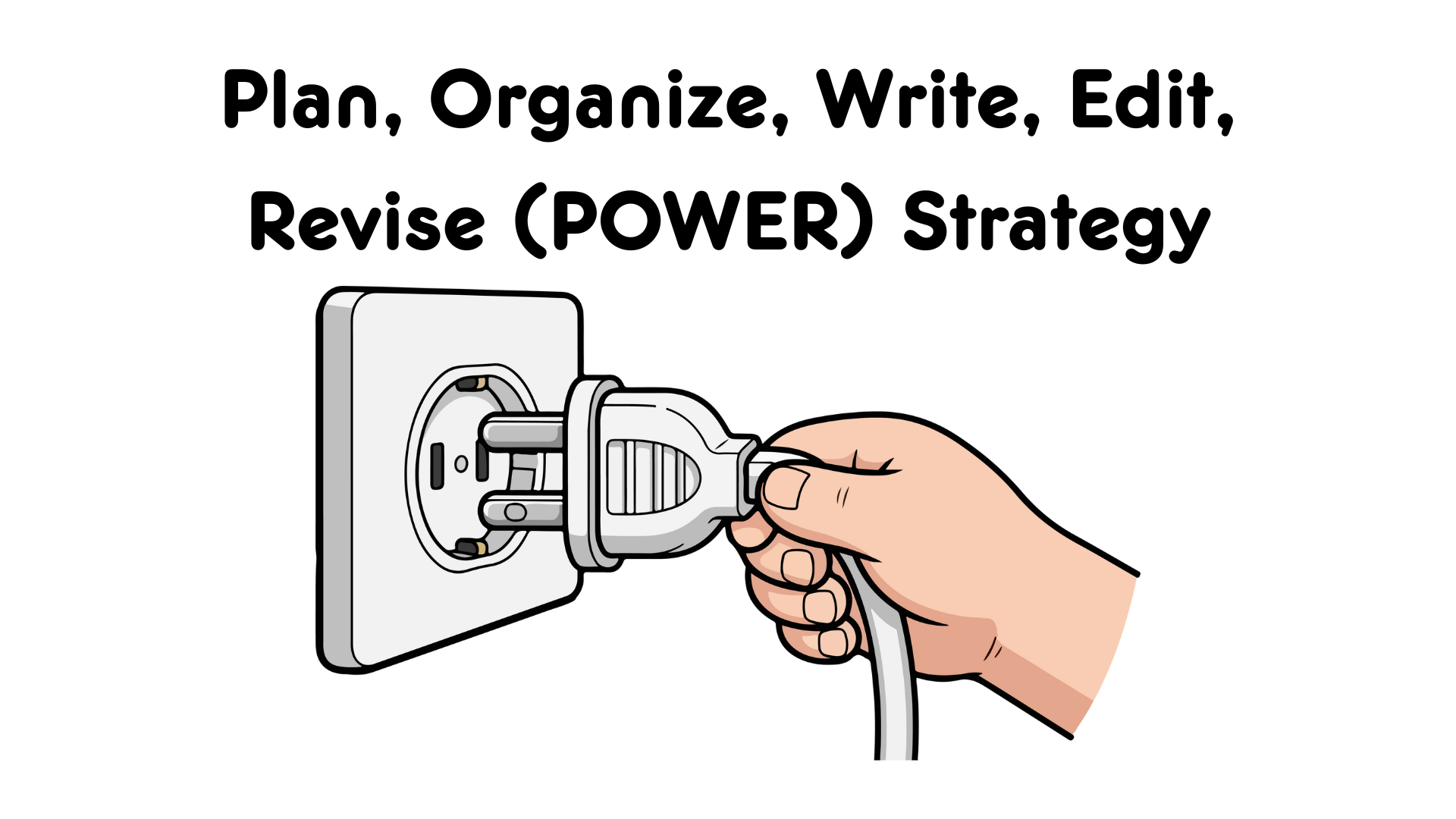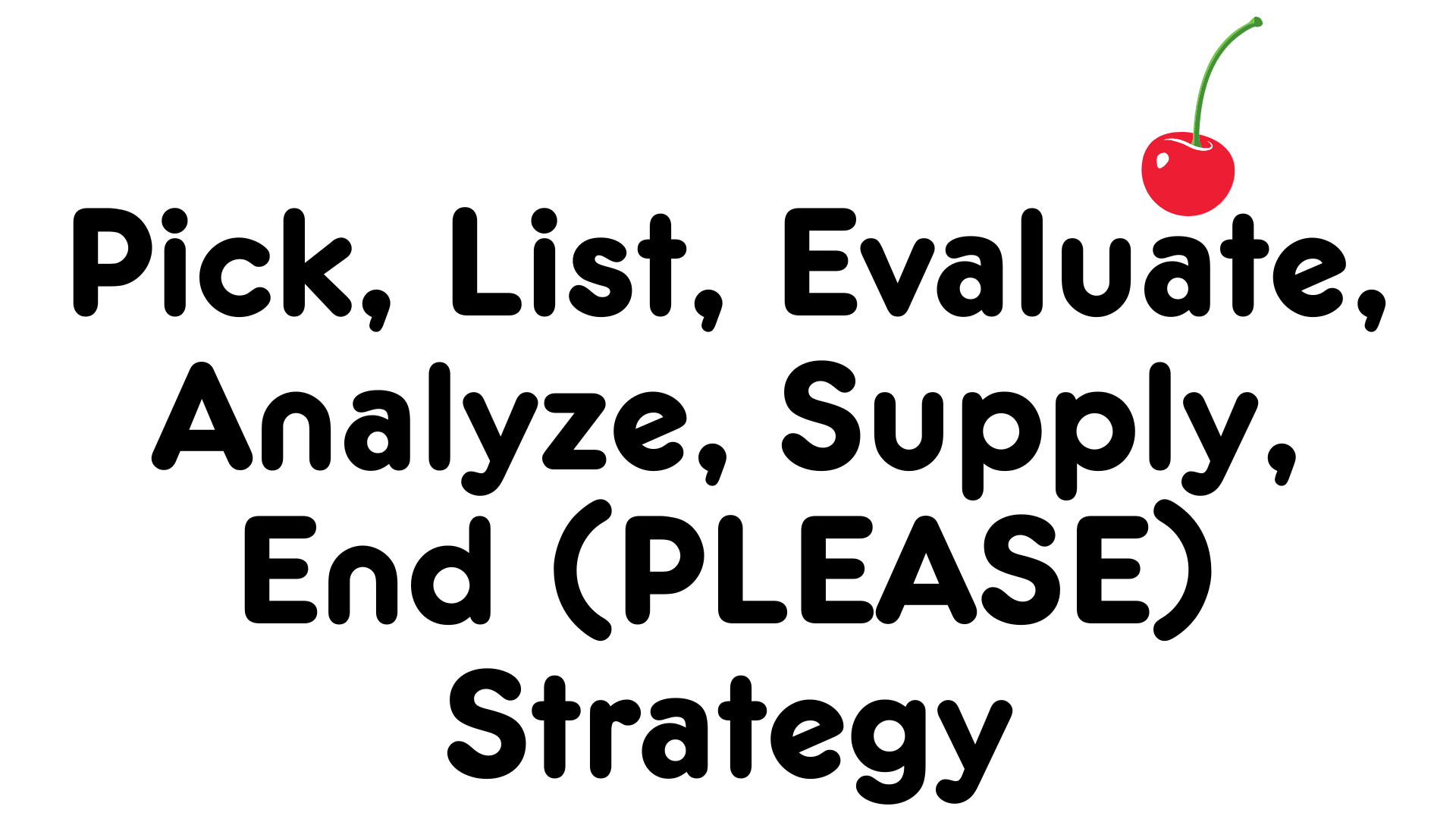Preview, List, Assign, Note, Search (PLANS) Strategy
Strategy Parameters
- Genres: Informational and Expository
- Grade Levels: 4-12
- Writing Process Stage: Planning, Drafting
At-A-Glance
The PLANS strategy is a multi-step planning process that uses metacognitive steps and the FRAME graphic organizer to help students systematically organize, draft, and revise their content before and during writing.

Overview
PLANS begins by requiring students to preview the topic, audience, and purpose, which immediately helps them focus their content and set clear goals. Following this, the strategy utilizes the FRAME graphic organizer to visually arrange and extract key points, thereby reducing the cognitive effort needed for sequencing complex ideas. The final stages involve prioritizing content, expanding notes into full paragraphs using topic sentences and transitions, and then thoroughly revising for clarity and coherence. This repeatable routine encourages intentional choices and builds significant writer confidence and independence over time.
Purpose and Benefits
This strategy helps students:
-
Establish a clear focus by critically assessing the topic, audience, and purpose before writing begins.
-
Visually structure their main ideas and supporting details using the FRAME graphic organizer.
-
Develop metacognitive thinking skills by making intentional choices about content selection and arrangement.
-
Systematically expand brief notes into well-developed, cohesive paragraphs with strong transitions.
-
Cultivate confidence and independence through a dependable, repeatable planning and revision routine.
Why It's Effective
-
Pre-Writing Focus: The initial previewing step ensures students are purpose-driven and focused, reducing the likelihood of irrelevant or off-topic writing.
-
Visual Aid: The FRAME organizer serves as a powerful visual scaffold, minimizing cognitive overload and helping students who struggle with abstract sequencing.
-
Systematic Drafting: It transitions smoothly from planning (FRAME) to drafting and revising, making the entire writing process a logical sequence of steps.
-
Metacognitive Promotion: By explicitly incorporating steps for prioritizing and revising, it teaches students to think critically about the quality and effectiveness of their communication.
-
Routine and Self-Talk: The strategy provides a consistent routine reinforced by self-talk strategies, which fosters a sense of control and mastery over the writing task.
Downloads




